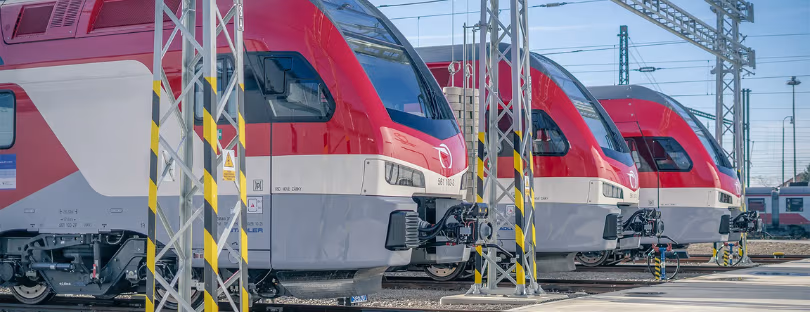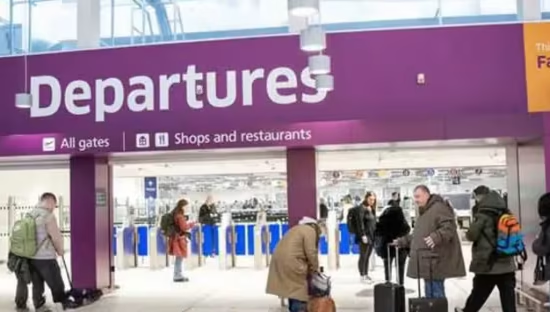
Slovakia Adds Modern Double-Decker Trains
In a significant leap towards modernizing Slovakia’s regional rail system, Železničná spoločnosť Slovensko (ZSSK) has partnered with Stadler, the Swiss railway manufacturer, to introduce up to four state-of-the-art electric KISS double-decker trains. This major move will not only enhance the Slovakian railway experience but also double Stadler’s footprint in the region.
The first vehicle is scheduled to enter service at the end of 2026, while the second will be introduced in 2027. The train will run on the railway line between Bratislava and Žilina. The contract includes an option to purchase two additional trains.
“Stadler trains have been running successfully in Slovakia for more than a year. I am pleased that we will once again deliver state-of-the-art KISS units to Slovak Railways. Thanks to their innovative design, these vehicles will offer the highest level of comfort and significantly increase capacity in regional and intercity passenger transport. The lightweight aluminum construction means lower operating and maintenance costs throughout their entire life cycle, ensuring cost-effective operations for the client,”
said Dr. Ansgar Brockmeyer, Executive Vice President Sales and Marketing at Stadler.
“Fleet renewal is a pillar of our vision for modern and sustainable transport. Thanks to today’s signing, we will bring innovative units to Slovak railways that will not only increase passenger comfort and satisfaction but also reduce energy consumption to 12 kWh per train kilometer and save dozens of tons of emissions annually. They have become a symbol of ecological solutions that improve quality of life and elevate rail transport to a new level. Our ambition is to keep Slovakia moving — ecologically, efficiently, and with pride on a European level,” said Peter Helexa, CEO of ZSSK.
Swiss technology and added value for the region
“Slovakia is yet another country in Central Europe that has been steadily increasing the number of Stadler trains operating on its rail network. I am delighted that we are continuing to strengthen Stadler’s market share in the region, which we believe has potential for further growth,”
said Zdeněk Majer, Chairman of the Supervisory Board at Stadler Prague, at the signing ceremony.
As with the units previously delivered to ZSSK, the new vehicles will be designed by Stadler Prague — Stadler’s engineering office, which currently employs over 250 engineers and designers. Manufacturing will take place at the Stadler Polska plant in Siedlce.
The KISS train for ZSSK
The new KISS trains are 155.9 metres long, with a total of 611 seats, including 30 first-class seats in the Comfort section. The units combine high power with rapid acceleration and reach a maximum speed of 160 kilometers per hour. They are fully accessible to wheelchair users and are fitted with four toilets, including one for passengers with reduced mobility. Multifunctional areas provide dedicated seating for wheelchair users and ample space for bicycles, pushchairs, and luggage. Both the passenger compartments and driver’s cabs are fully air-conditioned.
Passengers will benefit from a modern passenger information system and on-board Wi-Fi—essential features of contemporary railway travel. Advanced technology includes internal and external surveillance cameras, as well as roof-mounted cameras to monitor the pantograph for safe operation. The trains are also fitted with certified energy monitoring systems.
Stadler delivered four KISS trains to Slovak Railways in 2023 for regional lines in western Slovakia, operating between Bratislava and Nové Zámky and Bratislava and Trenčín or Púchov. This latest order will see the number of Stadler KISS trains double in Slovakia. In years 2001, 2003 and 2021, the manufacturer also supplied to Slovakia multifunctional electric units for the narrow-gauge lines in the High Tatras.
Final thoughts
Slovakia’s investment mirrors similar rail modernization initiatives across Europe. In Austria, the ÖBB has also embraced Stadler’s KISS models for its regional and S-Bahn services, while Hungary’s MÁV-START has deployed Stadler KISS units to bolster high-capacity commuter rail around Budapest. Elsewhere, Switzerland — the birthplace of the KISS — has long used these double-decker trains to handle dense suburban routes with high reliability. Even further afield, countries like Germany and Luxembourg have introduced the KISS to expand their regional mobility with a focus on sustainability and rider comfort.
These parallel efforts underscore a regional and continental trend: the revitalization of railway infrastructure as a cornerstone of green mobility. As Slovakia strengthens its rolling stock with proven European technology and leverages local engineering expertise via Stadler Prague, it positions itself not only as a user but also as a contributor to the Central European rail renaissance. If paired with further digitalization, network upgrades, and intermodal integration, projects like this could help usher in a new era of cross-border rail connectivity and sustainable growth across the continent.









